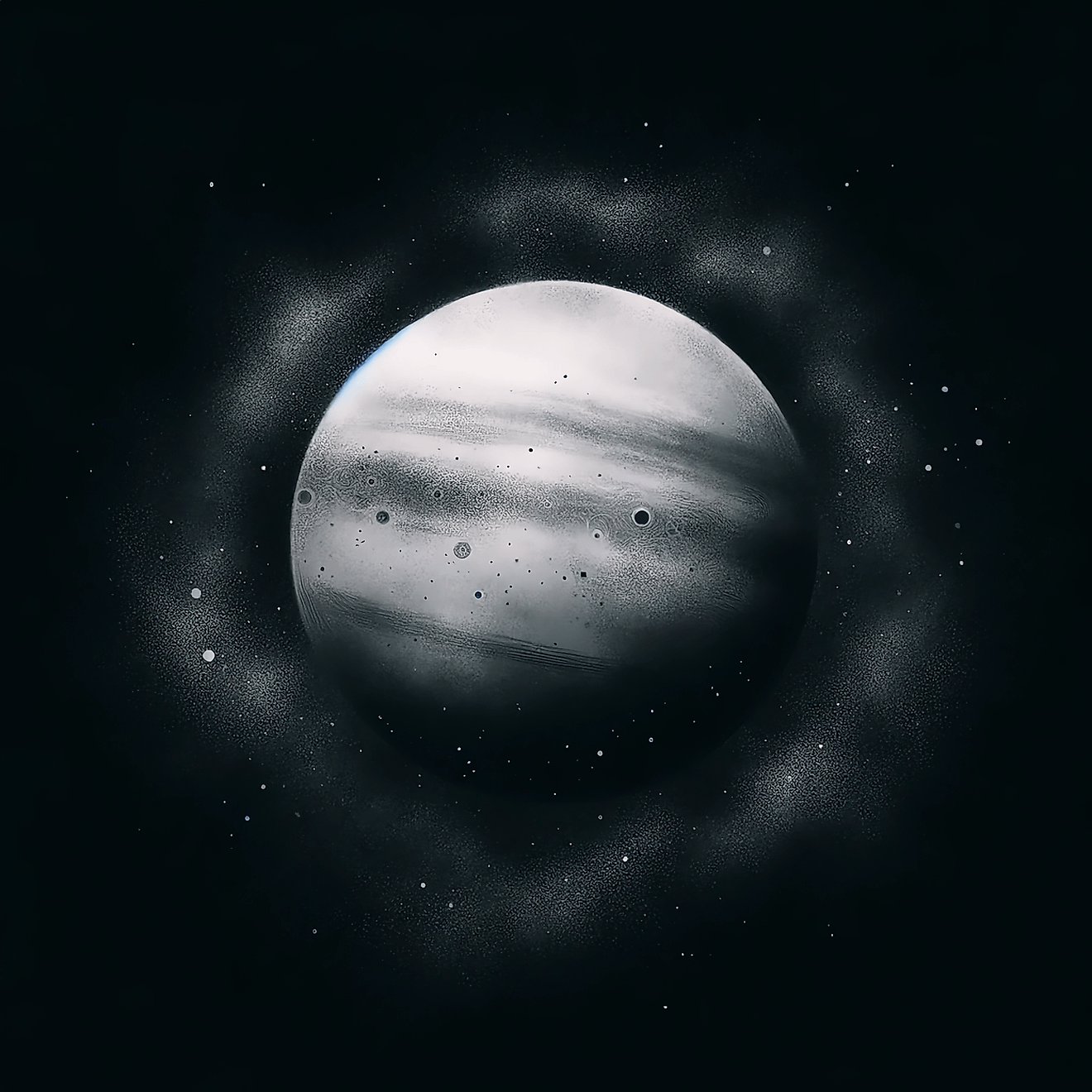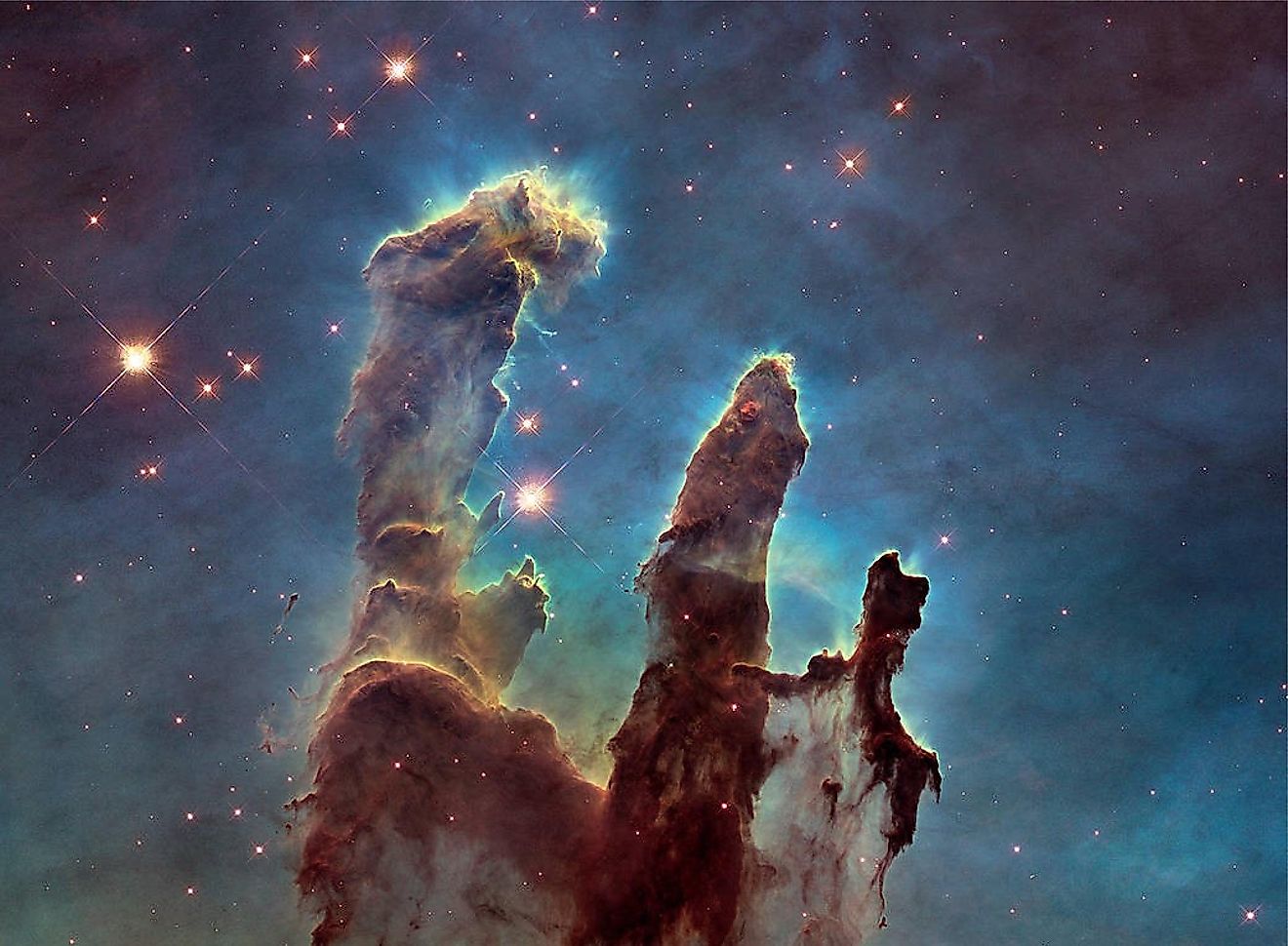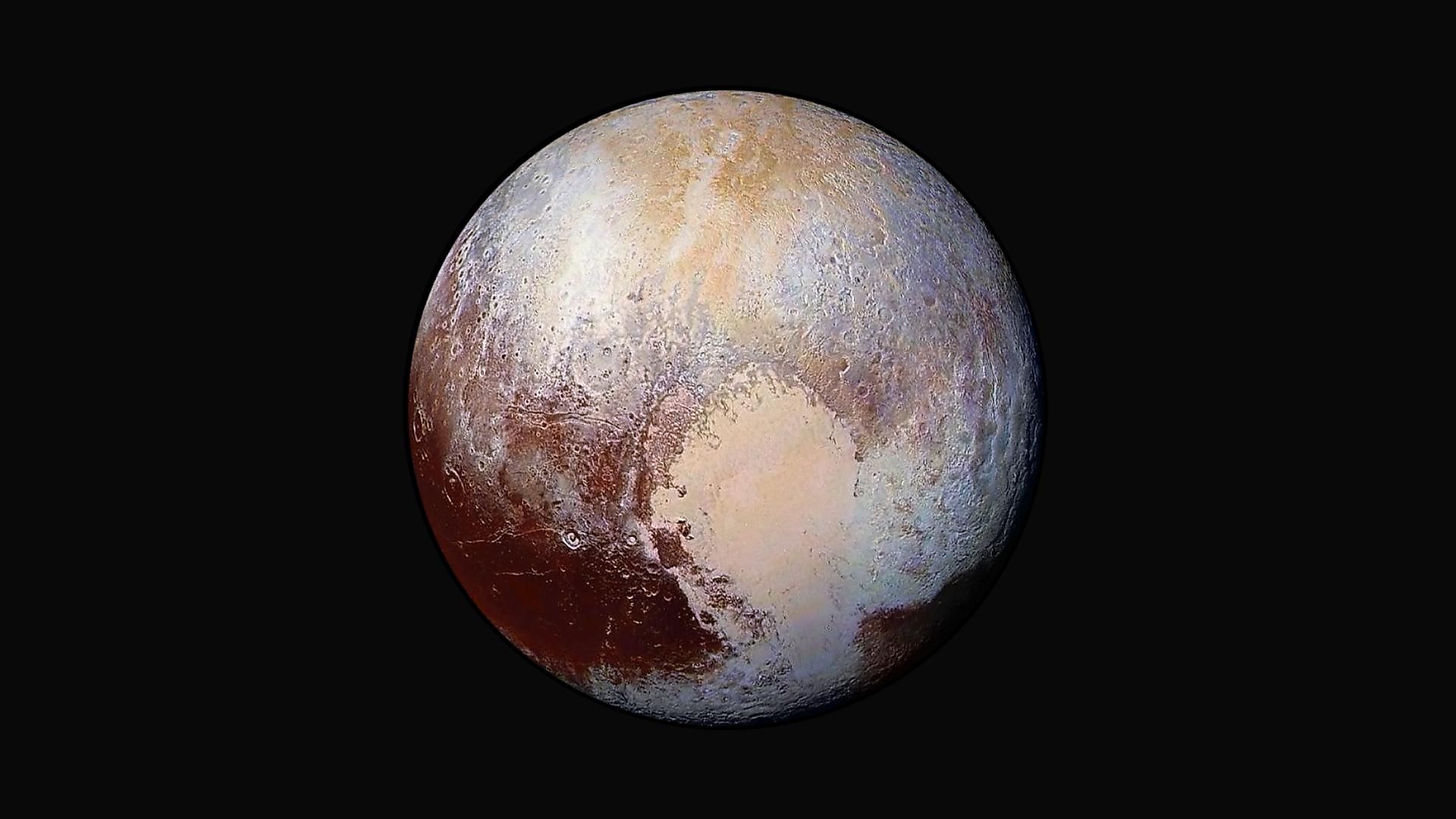
Pluto
Pluto is one of the smallest and farthest worlds from the sun, having a diameter of 2,376 kilometers and an average distance from the sun of 3.7 billion miles (5.9 billion kilometers). Pluto was first discovered in 1930 by the astronomer Clyde Tombaugh, and until 2006, it was believed to be the ninth planet in the solar system.
Given its small size and distance away from us, Pluto is an exceptionally hard world to observe. Ground-based telescopes, and even Hubble, are unable to observe the surface of Pluto. Virtually everything about Pluto and its moons was a mystery from the time of its discovery until the first robotic flyby of the Pluto system in 2015. In 2015, NASA's New Horizons spacecraft was the first spacecraft to reach the Pluto system and observe this small world up-close, offering scientists the first-ever high-resolution images of the surface. New Horizons revealed a world that defied expectations. Astronomers had assumed that Pluto would be a heavily cratered, barren world with little to no evidence of any geologic activity. Given Pluto's location in the Kuiper Belt, it would have been bombarded by asteroids and meteors throughout its history, and the surface should show clear evidence of these impacts. However, New Horizons found a world that lacked many impact craters.
Furthermore, some regions on the surface were remarkably smooth, suggesting that Pluto has experienced geologic activity in the recent past. New Horizons found evidence of volcanic activity in the form of nitrogen ice volcanoes, massive glaciers, vast ice plains, and perhaps even bodies of liquid nitrogen on the surface. Pluto may not be considered a planet anymore, but it is definitely as fascinating as the planets.
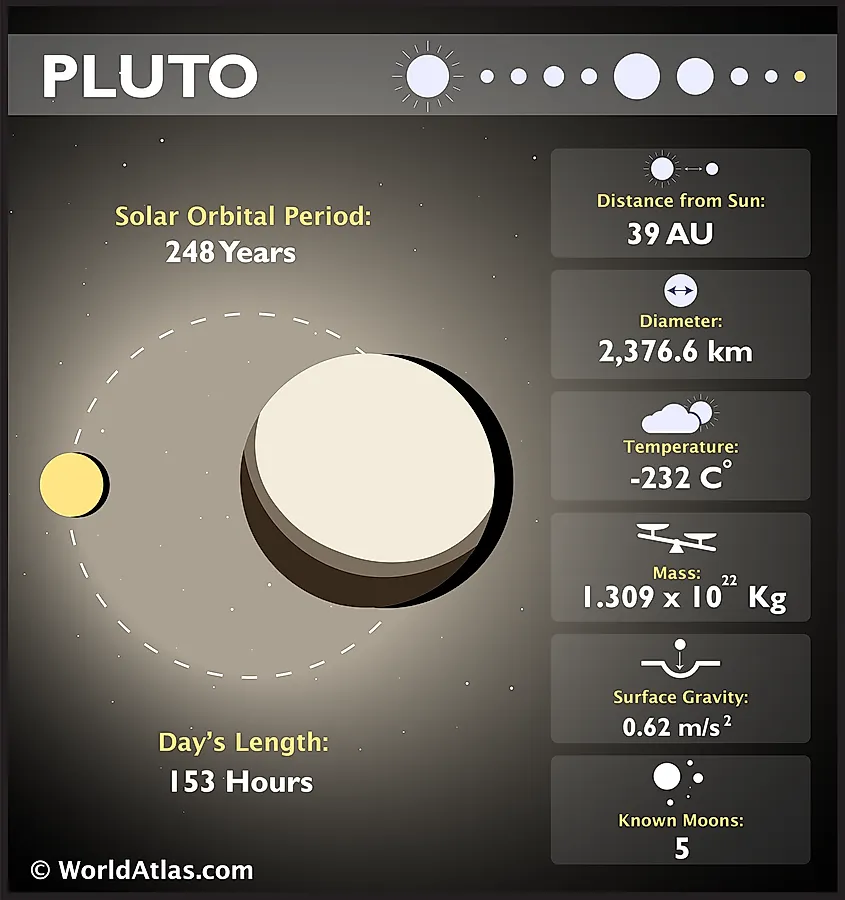
Observational History Of Pluto
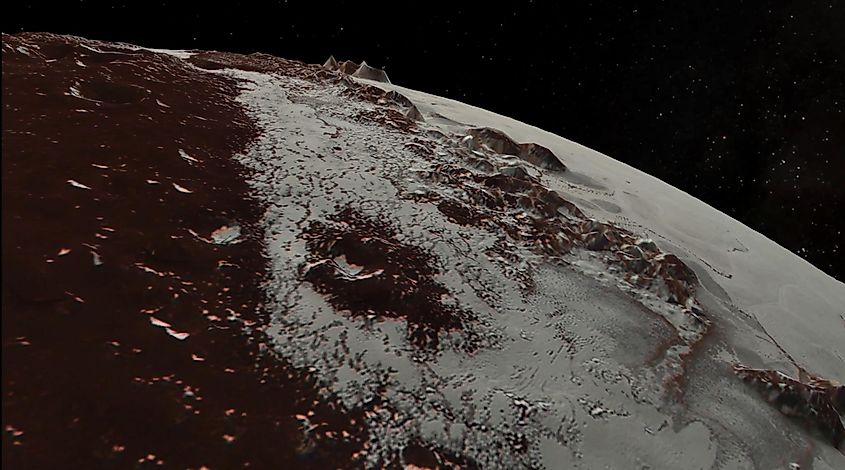
Pluto's discovery was somewhat of a coincidence, a direct result of the discoveries of the planets Uranus and Neptune. When Uranus was discovered in the 1780s, later observations revealed irregularities in its orbit. Astronomers accurately predicted that the gravitational pull of another planet was influencing the orbit of Uranus, and in the 1800s, Neptune was discovered orbiting beyond Uranus. Observations of Neptune revealed that its orbit also had some irregularities, and once again, astronomers predicted that another planet must exist beyond the orbit of Neptune. For decades, astronomers searched for the elusive planet, yet every search turned up empty. Then in 1930, astronomer Clyde Tombaugh discovered an object beyond Neptune's orbit, and it was believed that this object was the ninth planet from the solar system. The object was soon named Pluto, after the Roman god of the underworld.
Interestingly, Pluto's location was precisely where astronomers predicted the ninth planet to be. So it was assumed that the planet responsible for the irregularities in Neptune's orbit had been discovered. Unfortunately, technological limitations made it challenging to determine Pluto's size and mass. Astronomers had predicted earlier that the ninth planet would have a mass of around seven Earths. Although Pluto's mass could not be accurately determined, observations did reveal that Pluto was nowhere near as massive as some believed. In 1931, astronomers predicted it was at least the same mass as Earth, yet Pluto's mass would decrease throughout the 20th century. In 1948, the astronomer Gerard Kuiper calculated Pluto's mass to be only a tenth of Earth's mass. By the late 1970s, Pluto's mass was estimated to be a mere 0.0015 Earths. Pluto was once believed to be so massive it could influence the orbit of the gas giants, yet it turned out to be one of the smallest known worlds in the solar system. As it later turned out, astronomers simply did not know the actual mass of the planet Neptune. During the Voyager 2 flyby of Neptune in 1989, the true mass of Neptune was determined, and the irregularities in its orbit vanished. Pluto's discovery was directly tied to Neptune, yet it turned out that the two were never related. Pluto's discovery was entirely coincidental.
Despite its small size, Pluto was still widely considered a planet. Beginning in the 1990s, however, its status as a planet was called into question. Astronomers began discovering other objects of similar size and mass to Pluto that orbited in the Kuiper Belt, the same region as Pluto. None of these other worlds were classified as planets, and many wondered why Pluto should be defined as a planet while none of the others were. The final nail in the coffin for Pluto came in 2005 when astronomers announced the discovery of an object in the Kuiper Belt that had a noticeably larger mass than Pluto. Called Eris, it was not classified as a planet. To many astronomers, it made no sense to consider a more massive object than Pluto to not be in the same category as Pluto. Astronomers began to debate whether or not Pluto should be reclassified as a minor planet. In 2006, the International Astronomical Union (IAU) decided it was time to officially define what a planet is. They used three criteria to describe a planet. First, it must orbit the sun. Second, it must have a large enough gravitational pull to become spherical. Third, it must have enough mass to clear its orbital path of debris. Pluto meets the first two criteria, yet it is not massive enough to meet the third. Pluto was then demoted to a dwarf planet, and the solar system shrunk to eight planets. The same year that Pluto was reclassified as a dwarf planet, NASA launched the New Horizons spacecraft on a mission to Pluto. New Horizons arrived at Pluto on July 15, 2015, making it the first and only spacecraft to visit the Pluto system.
Pluto's Orbit
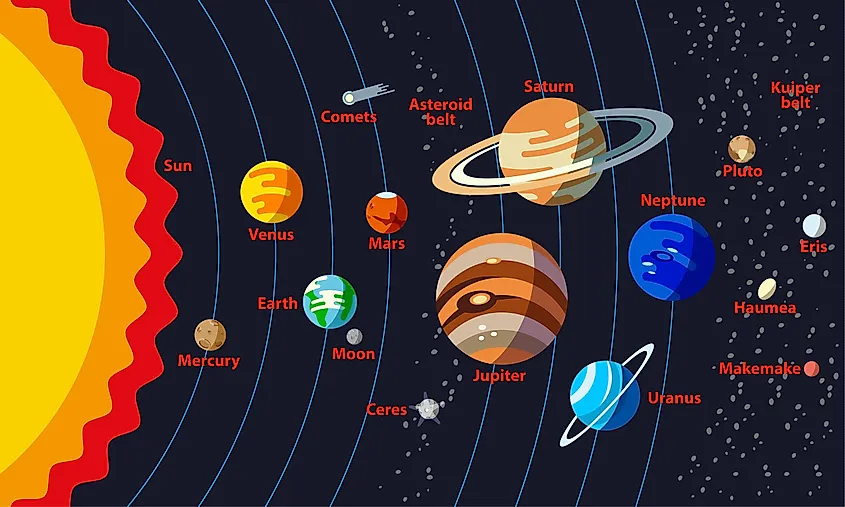
Given Pluto's distance away from the sun, it takes a tremendous amount of time for Pluto to complete one orbit. It takes Pluto 248 Earth years to orbit the sun once. Since Pluto was discovered in 1930, it has yet to complete a full orbit of the sun in the time its existence has been known. Pluto was discovered 92 years ago, and so it still has another 152 Earth years to go before it completes one orbit since its discovery. Pluto has a rather interesting orbit relative to the planets. All of the planets orbit the sun along a flat disk called the ecliptic. All of the planets have nearly circular orbits relative to the ecliptic. Pluto's orbit, however, is inclined by 17 degrees relative to the ecliptic, so it appears to move diagonally compared to the other planets. Pluto's orbital path is also highly eccentric, carrying over a vast distance across the solar system. Pluto will be 2.8 billion miles (4.5 billion kilometers) from the sun during its closest approach. Pluto will be 4.6 billion miles (7.3 billion kilometers) from the sun during its furthest course. That is a tremendous difference in distance. Sometimes, Pluto is even closer to the sun than Neptune. However, given Pluto's inclination relative to the ecliptic, its orbit never intersects with Neptune's, so there is little risk of the two colliding.
Geology Of Pluto
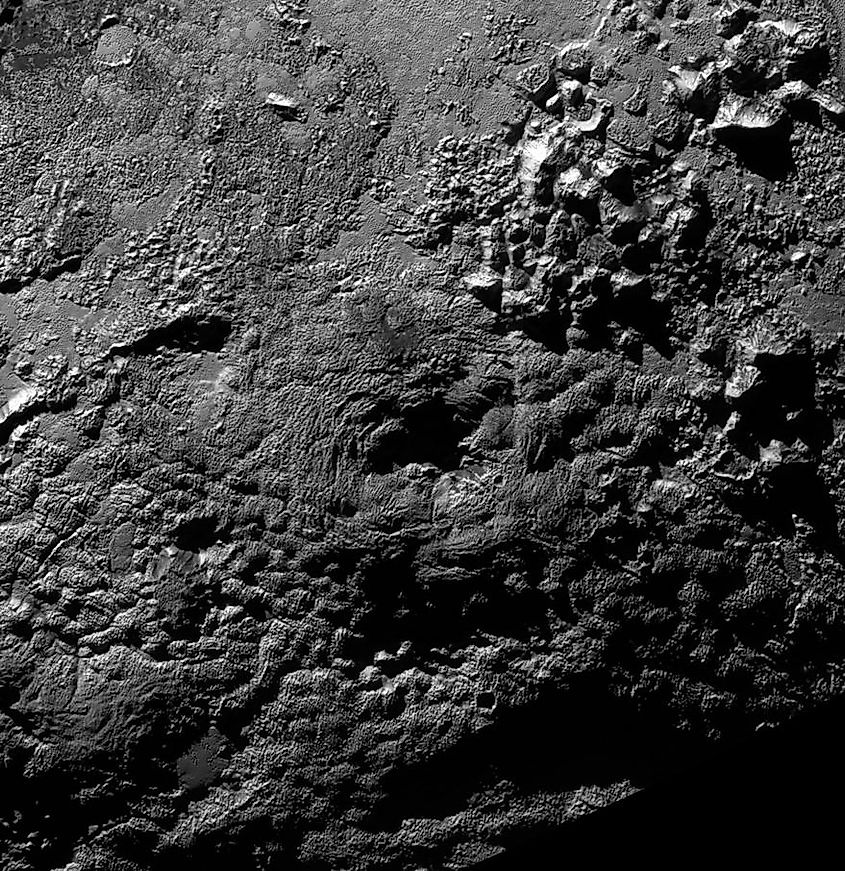
One of the most compelling discoveries made by New Horizons during its flyby of Pluto was the confirmation of geologic activity on Pluto's surface. Pluto is a small, far away world, and so it should have lost most of its internal heat many billions of years ago, similar to the Earth's moon. However, New Horizons found that some regions of Pluto's surface are as young as ten million years, a mere blink of an eye in astronomical time. The exact reason behind Pluto's geological activity is a mystery, especially given that there are no other objects in the solar system that display the kind of geology that Pluto has. Pluto may possess an abundance of radioactive materials in its core, with radioactive decay generating heat in Pluto's interior. However, there is no definitive evidence that this is the case. As of yet, how Pluto is an active world remains one of the biggest mysteries in the solar system.
The surface of Pluto is one of the most varied in the entire solar system. Some regions are smooth and bright, while others are rigid and dark. In fact, the difference in coloration on Pluto's surface is the most extreme in the solar system. Pluto's most intriguing region is Tombaugh Regio, a large area shaped like a heart. Tombaugh Regio contains no craters, and its age is estimated to be around ten million years. This region is home to vast plains of nitrogen ice, massive glaciers of water, and relatively smooth terrain. New Horizons found evidence of glacial flows, tectonic activity, and even volcanism.
Glaciers on Pluto are fascinating as they likely follow seasonal patterns. Since Pluto orbits the sun at an average distance of 3.7 billion miles (5.9 billion kilometers), you probably wouldn't expect Pluto to experience changes in surface temperature. Despite its distance, however, Pluto still experiences warmer and colder seasons. During the colder season, temperatures drop as low as minus 418 degrees Fahrenheit (minus 250 degrees Celsius). They can rise to about minus 364 degrees Fahrenheit (minus 220 degrees Celsius) in the warmer season. Although the warm season is still unbearably cold, that slight difference causes some exciting things. Under these frigid temperatures, nitrogen gas becomes nitrogen ice. Here on Earth, glaciers respond to temperature changes as well. During the summer months, glaciers on Earth can partially melt and shrink. More snow may be added during the winter, and the glaciers grow. On Pluto, however, warmer temperatures cause nitrogen and methane glaciers to grow. This somewhat counterintuitive discovery involves how nitrogen and methane behave under these extreme temperatures. For the most part, Pluto is cold enough for nitrogen and methane to remain in solid form throughout the year. However, as things warm up, individual nitrogen and methane molecules may change orientation and begin to move freely within their own solids. The individual molecules push against the ice and cause it to expand. Thus, glaciers grow during the summer and shrink during the winter, opposite to what occurs here on Earth.
Pluto's Atmosphere
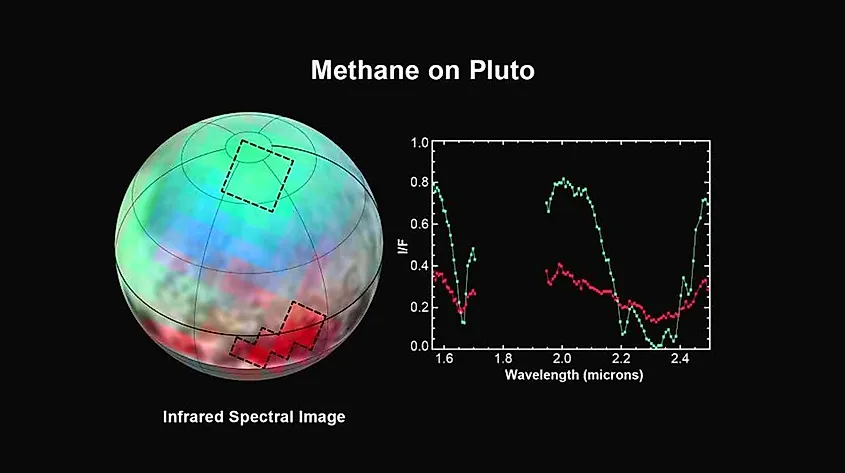
Despite its small mass, Pluto is capable of maintaining a noticeable atmosphere. The atmosphere of Pluto is composed of nitrogen, methane, and carbon monoxide. During its flyby, New Horizons calculated the atmospheric density of Pluto to be between one million and 100,000 times less than Earth's. However, the density of Pluto's atmosphere changes depending on how far away Pluto is from the sun. The highly elliptical orbit of Pluto carries it across a vast distance. The distance between Pluto and the sun changes by a significant amount. During its closest approach to the sun, temperatures increase, and some of the chemicals on the surface become gaseous, increasing the atmosphere's density. It is predicted that even a tiny change in Pluto's temperature can drastically increase the density of its atmosphere, even to the point where Pluto has a denser atmosphere than Mars. Under these higher atmospheric pressures, nitrogen could theoretically exist in liquid form on the surface, and New Horizons observed some evidence suggesting liquids flow across the surface.
Moons Of Pluto
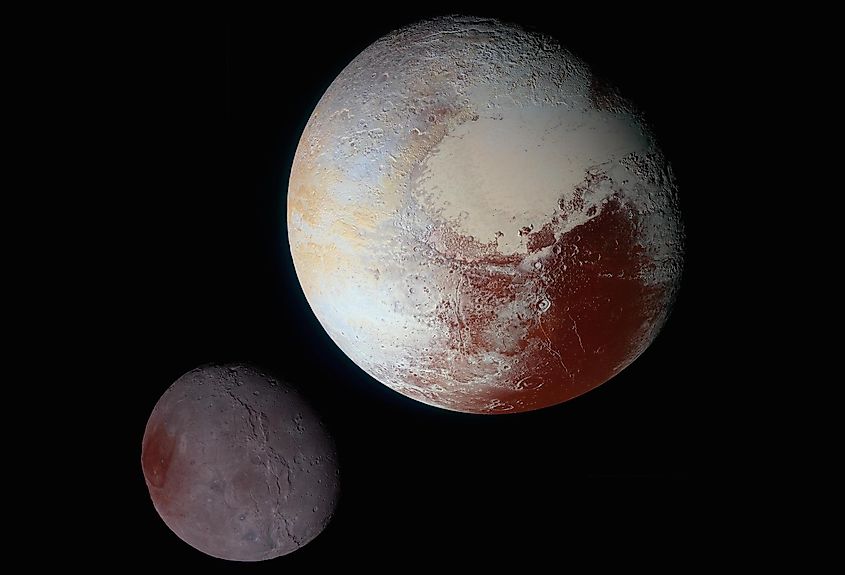
The Pluto system is truly one of the solar system's most interesting. Pluto is orbited by five moons, the largest of which, Charon, is remarkably close in size to Pluto. At 753 miles (1,212 kilometers) in diameter, Charon and Pluto have the largest size ratio of any other object and its satellite in our solar system. Charon is roughly 12% the mass of Pluto and is nearly as dense as Pluto. These factors have resulted in a strange orbital dynamic between the two bodies. The barycentre (the area around which objects orbit) is outside of Pluto, and thus, astronomers have defined Pluto and Charon as a double dwarf planet system. Charon doesn't technically orbit Pluto, but rather, the two orbit each other. Despite its small size and distance from the sun, you likely wouldn't expect to find evidence of geologic activity on Charon. Yet, in 2015, the New Horizons spacecraft found clear evidence of widespread resurfacing and volcanic activity. Unlike on Earth, however, these volcanoes don't spew out hot magma. They likely emit water and ice. Unlike most moons in the outer solar system, Charon contains relatively few impact craters, with most of them being concentrated on the moon's northern hemisphere. The southern hemisphere of Charon is also a lot smoother and less rugged than the north, which suggests that at some point in its past, Charon experienced a widespread resurfacing event, which could have been caused by the rapid freezing of a subsurface ocean. The North Pole of Charon is one of its most interesting features, not just because it's been nicknamed "Mordor" due to its darker color. This region is rich in organic molecules, the critical building blocks for life. Amazingly, astronomers believe that these organic molecules likely came from Pluto. When temperatures rise during Pluto's summer, compounds like methane go from their solid-state to a gaseous state and escape Pluto's thin atmosphere. Over time, they eventually find their way to Charon and fall into its northern region.
All of Pluto's moons were discovered relatively recently. Charon was found in 1978, and every other moon has been found in the last 20 years. Charon is the closest moon to Pluto, followed by Styx, Nix, Kerberos, and Hydra. Charon is the only spherical moon of Pluto, as the other four are too small to become spherical objects. Pluto's four small moons look more like asteroids than moons. Pluto's moons likely formed in the same way the Earth's moon did: a planetary collision. Shortly after Pluto formed, it probably collided with another object of similar size and mass. The collision would have ejected a tremendous amount of debris into orbit, where it eventually merged to form Pluto's five moons.
| Diameter | 1,476 miles (2,376 kilometres) |
|---|---|
|
Mass |
0.0022 Earths |
|
Moons |
Five |
|
Average distance from the sun |
3.7 billion miles (5.9 billion kilometres) |
|
Length of year |
248 Earth years |
|
Length of day |
6.4 Earth days |
|
Surface temperature |
Minus 375 degrees Fahrenheit (minus 226 degrees Celsius) |
|
Atmospheric composition |
Nitrogen, methane, carbon monoxide |
|
Surface composition |
Nitrogen ice, methane ice, water ice |
|
Discovery date |
February 18, 1930 |
|
Discovered by |
Clyde Tombaugh |










